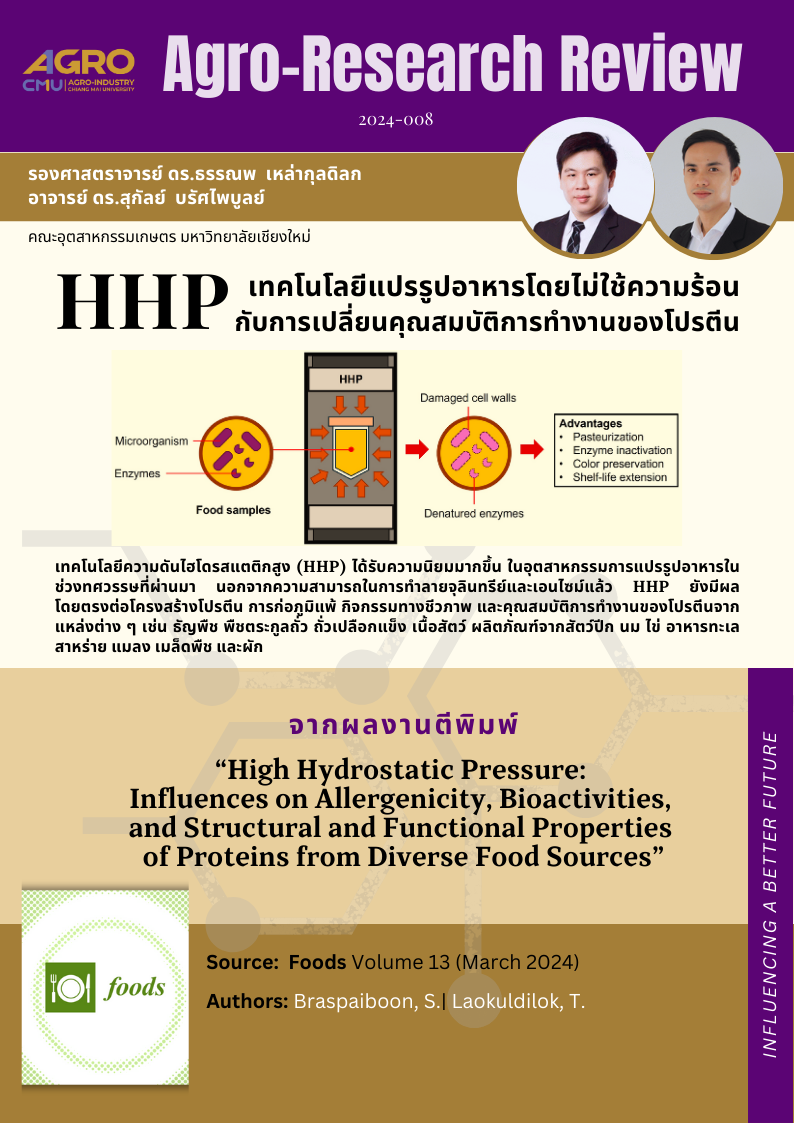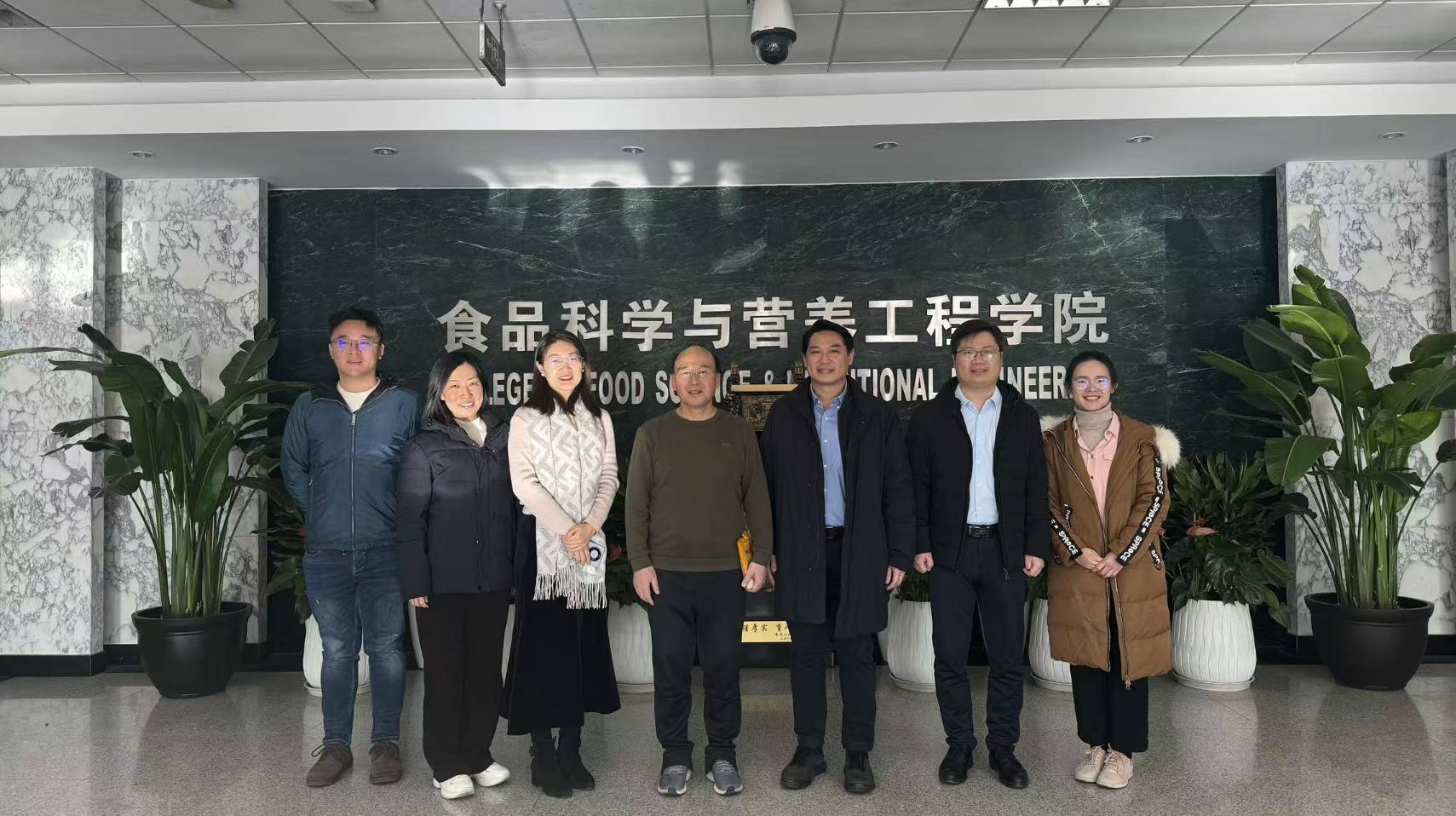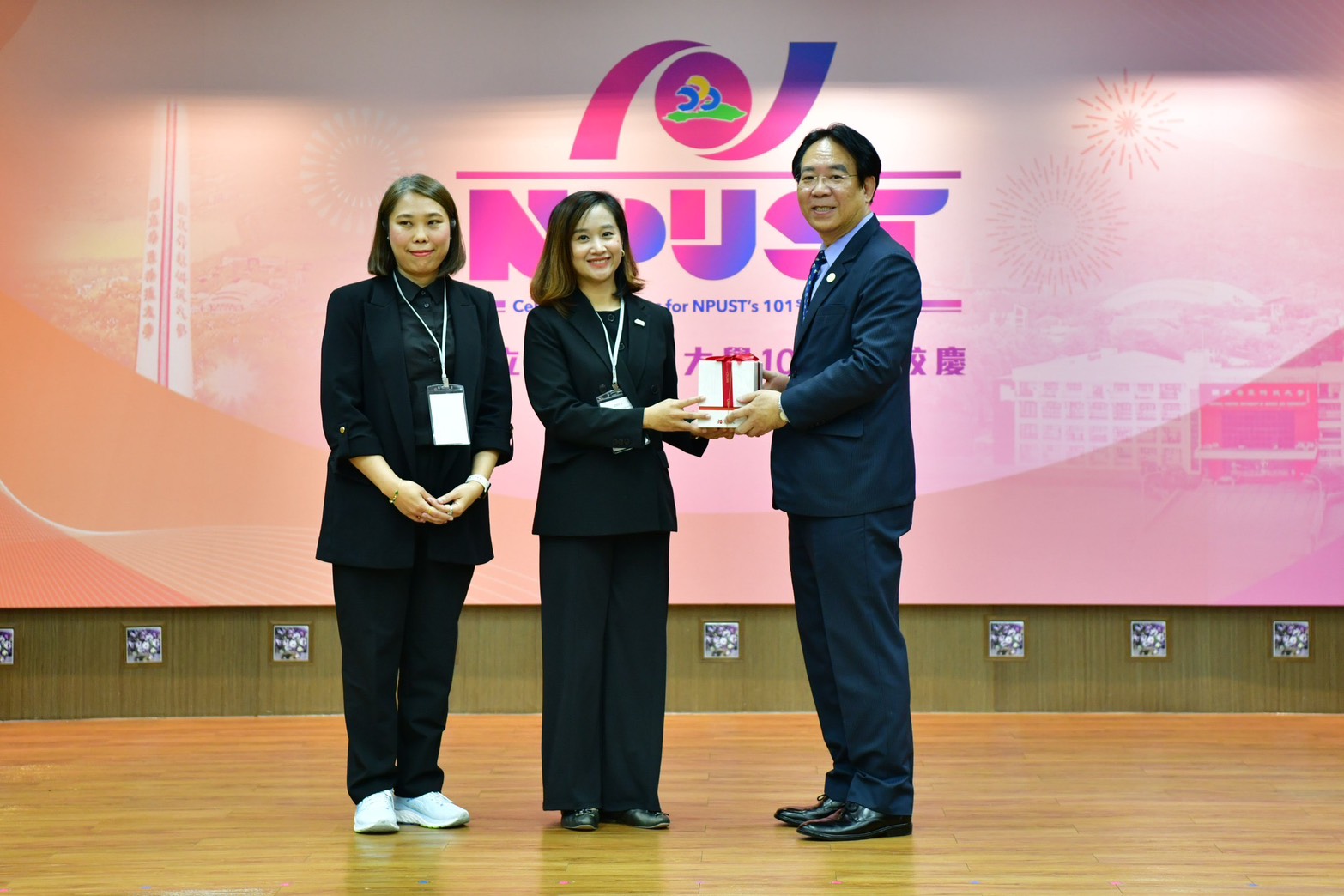
แนะนำงานวิจัย 2024-008 HHP เทคโนโลยีแปรรูปอาหารโดยไม่ใช้ความร้อน กับการเปลี่ยนคุณสมบัติการทำงานของโปรตีน
เทคโนโลยีความดันไฮโดรสแตติกสูง (HHP) ได้รับความนิยมมากขึ้นในอุตสาหกรรมการแปรรูปอาหารในช่วงทศวรรษที่ผ่านมา นอกจากความสามารถในการทำลายจุลินทรีย์และเอนไซม์แล้ว HHP ยังมีผลโดยตรงต่อโครงสร้างโปรตีน การก่อภูมิแพ้ กิจกรรมทางชีวภาพ และคุณสมบัติการทำงานของโปรตีนจากแหล่งต่าง ๆ เช่น ธัญพืช พืชตระกูลถั่ว ถั่วเปลือกแข็ง เนื้อสัตว์ ผลิตภัณฑ์จากสัตว์ปีก นม ไข่ อาหารทะเล สาหร่าย แมลง เมล็ดพืช และผัก
High hydrostatic pressure (HHP) has gained prominence in the food processing industry over the last decade. In addition to the effectiveness of microbial and enzymatic inactivation, HHP directly impacts protein structures and properties, allergenicity, bioactivities, and functional properties across diverse protein sources. They encompass cereals, legumes, nuts, meat, poultry products, milk, eggs, seafood, algae, insects, seeds, and vegetables.
Topic: High Hydrostatic Pressure: Influences on Allergenicity, Bioactivities, and Structural and Functional Properties of Proteins from Diverse Food Sources
Authors: Braspaiboon, S.| Laokuldilok, T.
Abstract:
High hydrostatic pressure (HHP) has gained prominence in the food processing industry over the last decade. In addition to the effectiveness of microbial and enzymatic inactivation, HHP directly impacts protein structures and properties. Accordingly, this review article aims to consolidate relevant research findings elucidating the effects of HHP on protein structure, allergenicity, bioactivities, and functional properties across diverse protein sources. They encompass cereals, legumes, nuts, meat, poultry products, milk, eggs, seafood, algae, insects, seeds, and vegetables. This review provides insights into the consistent trends of HHP effects on each protein source. In conclusion, HHP induces alterations in non-covalent bonds within protein structures, leading to the unfolding of their interior regions and consequential changes in their properties. Remarkably, the allergenicity of cereals, legumes, and nuts decreases while their bioactivities and digestibility escalate. The disruption of non-covalent bonds during HHP results in the exposure of the interior hydrophobic regions to the surface microenvironment, thereby enhancing the surface hydrophobicity of proteins, particularly those derived from seeds and vegetables. HHP weakens the allergenicity and elevates the foaming properties of proteins from dairy products, including improving the gelling properties and antioxidant activities of egg proteins. Texture profiles of meat and poultry, particularly hardness, are enhanced. Furthermore, HHP demonstrates the potential to diminish the allergenicity of seafood proteins and augment insect protein bioactivities. Lastly, HHP enhances the extraction of algal bioactive components, improving their nutritional quality.
Keywords: allergenicity; high pressure processing; surface hydrophobicity; texture; unfolding
View at publisher: https://www.mdpi.com/2304-8158/13/6/922
#อกมช. #agrocmu #CMU



